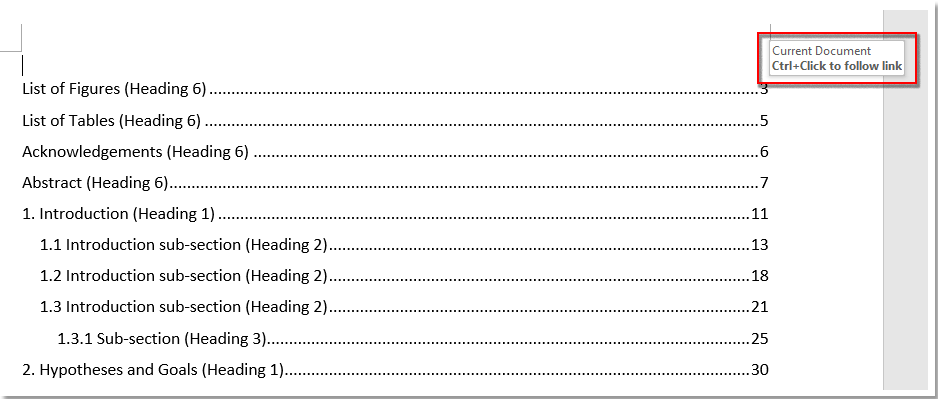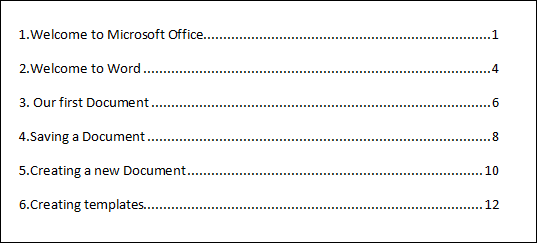

- How to create table of contents in word 2010 tutorial how to#
- How to create table of contents in word 2010 tutorial update#
Then, right click on the highlighted text and choose Hyperlink from the flyout menu (way down toward the bottom):Īt the top, you see “Text to display” at the bottom, you see “Address.” To keep the URL text in the document, simply click the OK button-Word has automatically used the highlighted text as the “Text to display” and the same URL as the “Address”:Īlternatively, you could replace the “Text to display” with something else. First, type the URL into the document, then highlight it with your cursor: If you’re like me and would rather turn off such autoformatting, you can still create a hyperlink manually. On the AutoFormat tab, make sure the box for “Internet and network paths with hyperlinks” is checked: If you type a hyperlink, e.g.,, and it does not automatically link, you can turn on this setting by going to FILE → Options, so this window opens:įrom here, click on Proofing on the left-hand side, then on the AutoCorrect Options button toward the top: Oftentimes, your user settings will be specified to automatically convert a typed URL into a hyperlink. This process is relatively straightforward.

Creating Simple Hyperlinks in Microsoft Word
How to create table of contents in word 2010 tutorial how to#
Let’s start with learning how to create simple hyperlinks. This article describes, with the aid of screenshots, how to hyperlink content and create a linked table of contents (TOC).

Oftentimes, creating these links in your Word document before you convert to EPUB or MOBI (i.e., Kindle) will automatically create the links in the ebook files, especially if you use conversion services, such as those offered by Draft2Digital or freeware like Calibre. This extends beyond tables of contents to URLs that appear in your text, endnote numbers, and the like.

Any style used within Microsoft Word can be included in a table of contents, so you are not limited to using the standard Heading 1, Heading 2 or Heading 3 styles. Each TOC level is displayed at a different indentation point within the TOC to make identification of main headings and subheadings easy. The TOC level refers to which level within the hierarchy, the heading will be displayed. You can include multiple heading levels such as a chapter heading and then multiple subheading levels. If you are new to using styles then you can take a look at my post titled Introduction to Styles in Microsoft Word.Ī TOC can display headings and page number references for topics within a document and is usually located within the first couple of pages of the document. The Table of Contents (TOC) feature relies on the use of heading styles for it to work.
How to create table of contents in word 2010 tutorial update#
This function is easy to use and easy to update or alter to suit the needs of the document. No need to manually create a table of contents and continually update the page numbers yourself. Microsoft Word has provided an easy-to-use function that enables users to quickly incorporate a table of contents in a document. Whether it is opening a magazine or reading the newspaper, you will see this feature in many types of reading materials. In many aspects of our daily life, we encounter and use a table of contents.


 0 kommentar(er)
0 kommentar(er)
